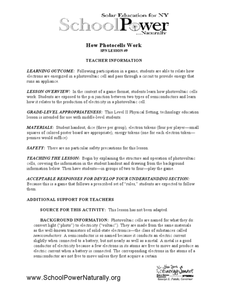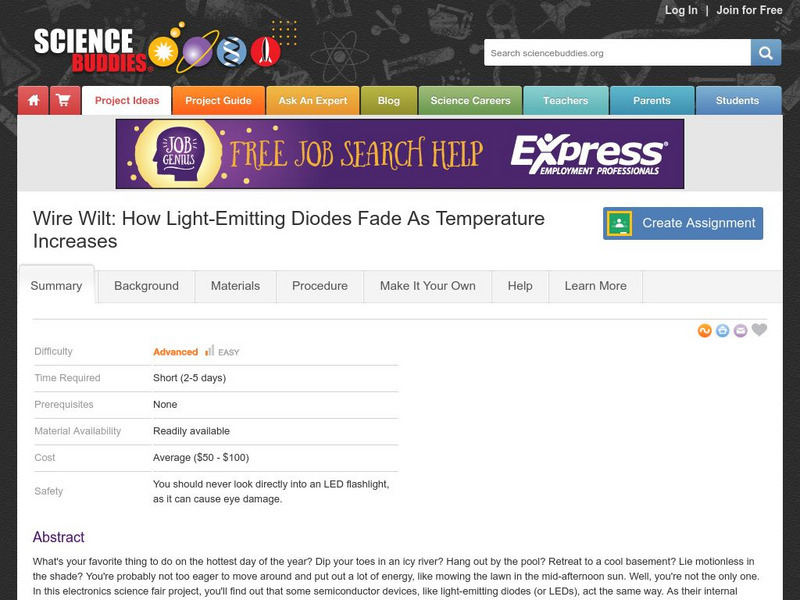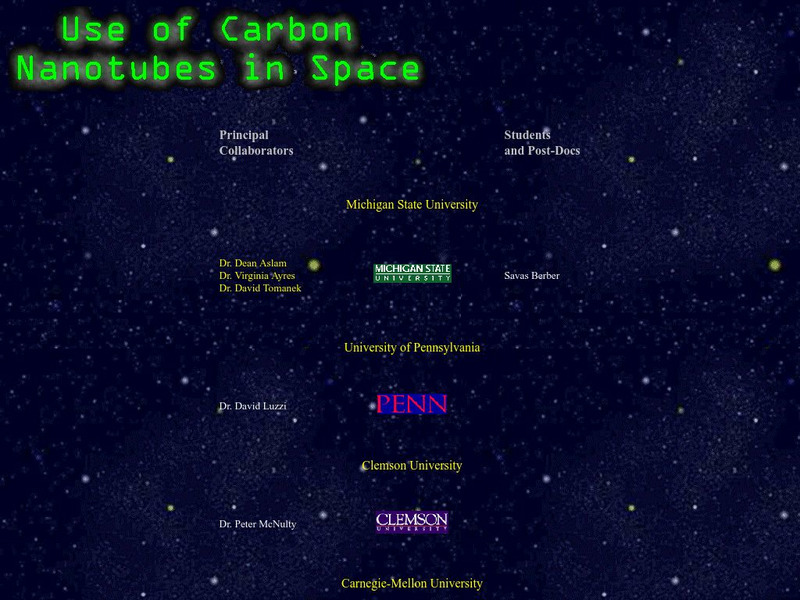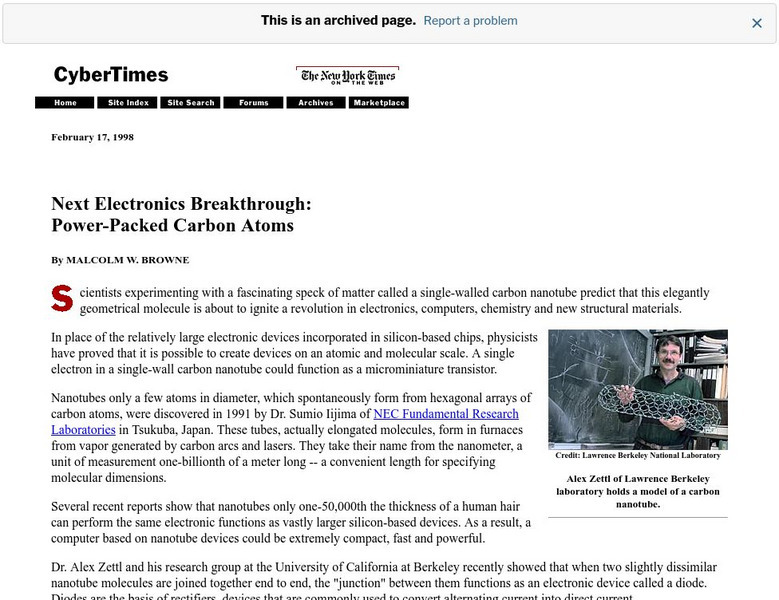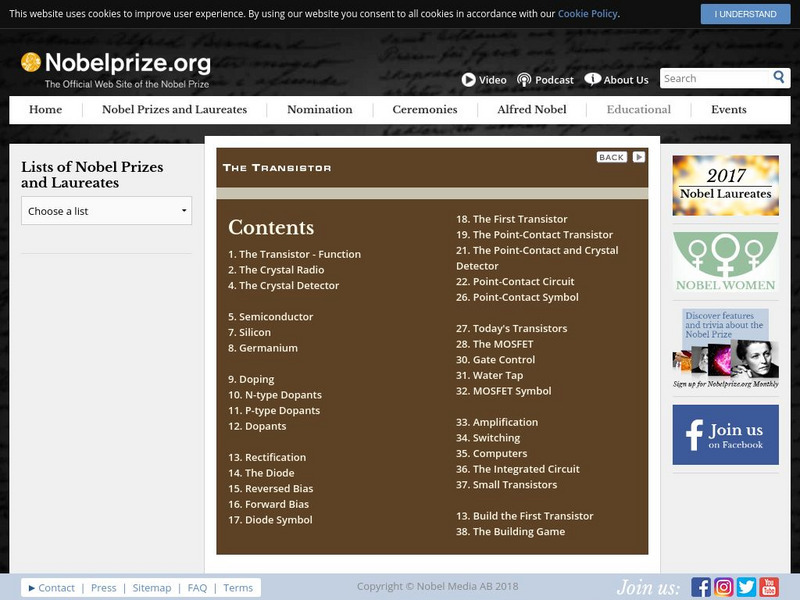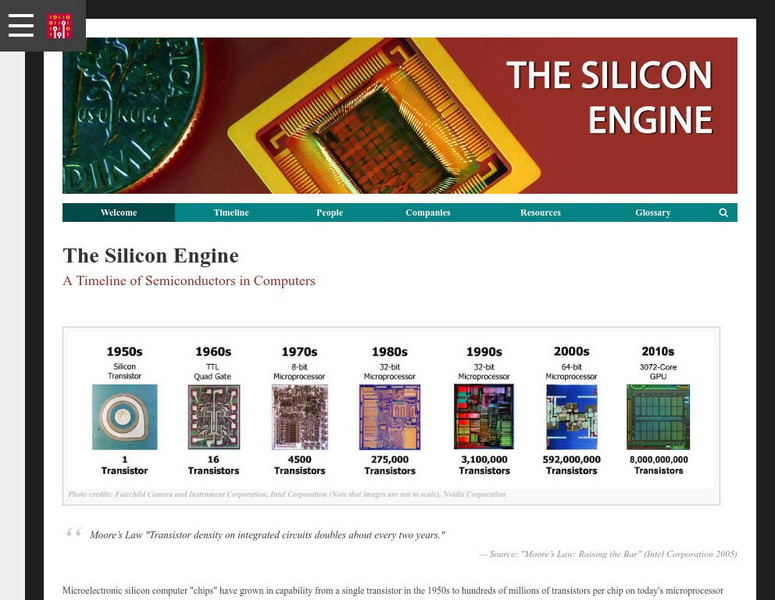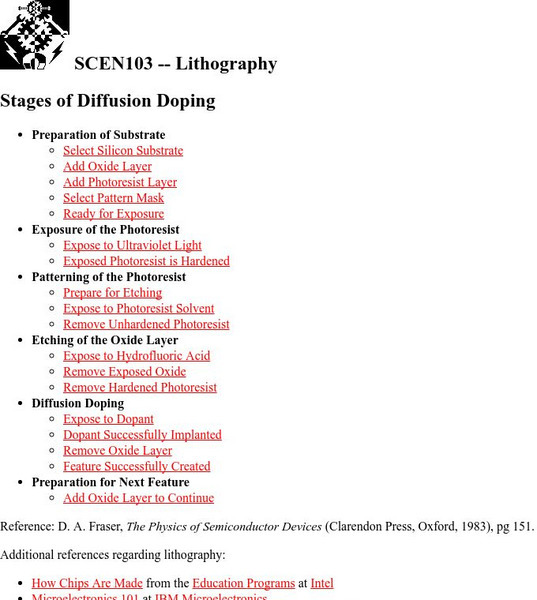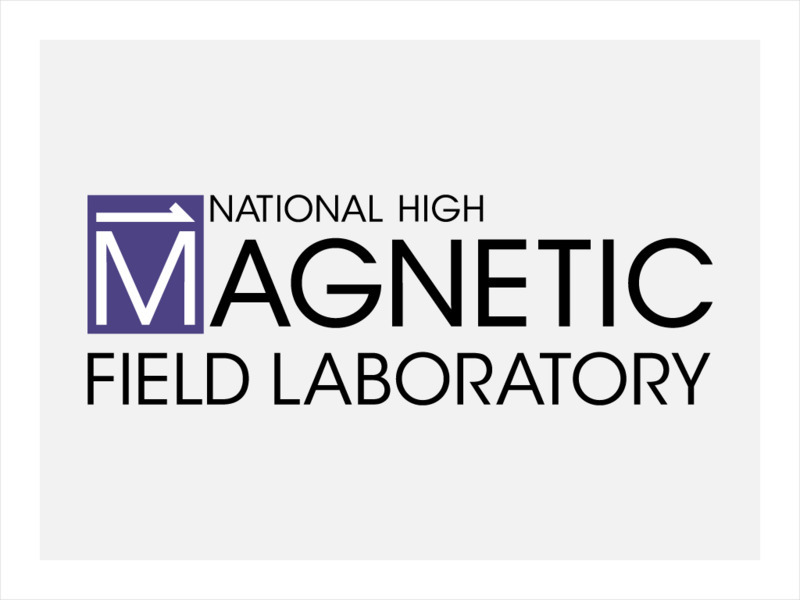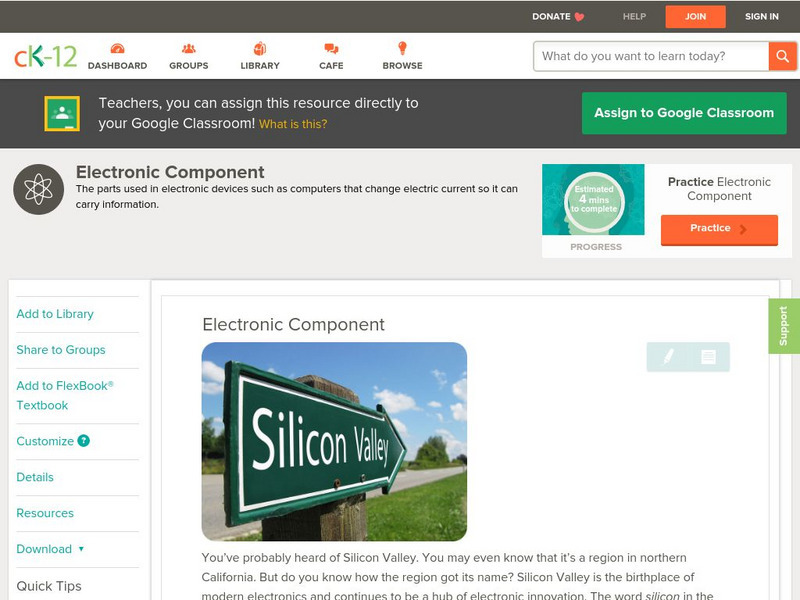Curated OER
How Photocells Work
Give small groups of physical scientists tokens that represent electrons in a photovoltaic cell. They play a dice game in which they move the tokens around, representing the flow of electrons through the p-n junction of a semiconductor...
Science Buddies
Science Buddies: Wire Wilt: Light Emitting Diodes Fade as Temperature Increases
In this electronics science fair project, students will investigate how the output of an LED flashlight changes as its temperature increases.
Michigan State University
Michigan State University: Cluster Science Collaboration: Use of Carbon Nanotubes in Space
A very complete overview of research into carbon nanotubes and a description of what they are, how to make them, and their potential uses.
New York Times
New York Times: Cyber Times: Next Electronics Breakthrough: Power Packed Carbon Atoms
An excellent overview of the field of carbon nanotubes. Includes a summary of the discovery of fullerenes. Also, the potential use of nanotubes as semiconductors. From an article written in 1997.
Nobel Media AB
The Nobel Prize: The Transistor
This site from the Nobel Foundation provides detailed information on how the transistor works. The site provides illustrations and animations to help clarify the concepts presented.
Concord Consortium
Concord Consortium: Stem Resources: Semiconductors
Several visualizations that help students understand the basic properties of semiconductors. Students can turn a silicon crystal into an insulator or a conductor, investigate the probability waves of an electron, and make a depletion...
Computer History Museum
Computer History Museum: The Silicon Engine
Microelectronic silicon computer chips have provided the growth engine for the technology revolution. This site provides a wealth of information about the development of semiconductors. Included is a timeline of major events, a list of...
University of Wisconsin
The Why Files: Power Plants
Photovoltaic technology is compared and contrasted to the natural phenomenon of photosynthesis. The means by which photocells harness solar energy is described and explained.
Other
University of Delaware Physics Department: Lithography
University of Delaware Physics Department provides this indexing page for a slide show presentation.
Other
Univ. Of Delaware Physics: More Semiconductor Physics
The University of Delaware Physics Department provides this site from a site titled "Silicon, Circuits, and the Digital Revolution," here is a series of four pages which explain the details behind how semiconductors work. An introduction...
National High Magnetic Field Laboratory
Magnet Academy: Walter Brattain (1902 1987)
Walter Houser Brattain discovered the photo-effect that occurs at the free surface of a semiconductor and was co-creator of the point-contact transistor, which paved the way for the more advanced types of transistors that eventually...
CK-12 Foundation
Ck 12: Physical Science: Electronic Component
[Free Registration/Login may be required to access all resource tools.] Overview of electronic components: semiconductors, diodes, transistors, and integrated circuits.
Peter F.J. Harris
A Carbon Nanotube Page
This site is an excellent, higher level, introduction to nanotubes and how they might be used.
Science Struck
Science Struck: Different Types of Diodes
Explains what a diode is and what its purpose is, and describes eight different kinds of diodes.
Science Struck
Science Struck: How Does a Diode Work?
A short ebook (with some embedded ads) that explains how diodes work, some different types, and some applications of diodes.
University of Wisconsin
The Why Files: Positive Energy
A novel idea for converting solar energy to electrical energy. A brief discussion of solar energy collection in space via satellites.
Wikimedia
Wikipedia: Electrical Conductivity
This is the encyclopedic entry for electrical conductivity from Wikipedia.com. The site provides a brief introduction to the topic but provides numerous links to information relative to the topic.
Other
Physics Web: Nobel Prize Goes to Semiconductor Pioneers
This site from Physics Web gives information on the 2000 Nobel Prize in Physics. It was awarded to Zhores Alferov and Herbert Kroemer for the invention of semiconductor lasers, integrated circuits and other high-speed electronic devices....


